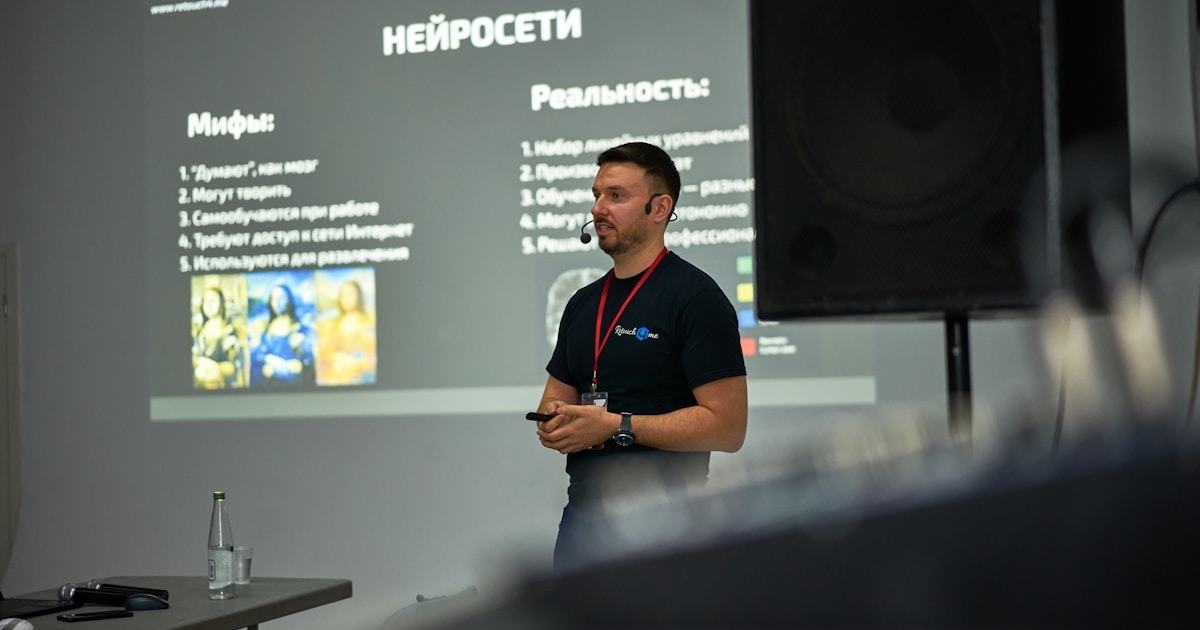What is Appointment Setting? A Comprehensive Guide for B2B Tech Companies
Master B2B appointment setting with our comprehensive guide. Learn proven strategies, best practices, and expert tips to generate qualified meetings and accelerate revenue growth. Includes real metrics and industry benchmarks.

What is Appointment Setting? A Comprehensive Guide for B2B Tech Companies
Updated October 2025 - Complete guide to B2B appointment setting and lead generation
Table of Contents
- Understanding B2B Appointment Setting
- The Appointment Setting Process
- Measuring and Optimizing Success
- Industry-Specific Strategies
- Making the Build vs. Buy Decision
Appointment setting is a critical component of B2B sales development that focuses on scheduling qualified meetings between your sales team and potential buyers. According to Gartner research, B2B buyers spend only 17% of their time meeting with potential suppliers—making every meeting opportunity crucial for success.
Understanding B2B Appointment Setting
Definition and Purpose
Appointment setting in B2B tech involves identifying, engaging, and qualifying potential buyers before scheduling meetings with your sales team. The primary goals are to:
- Generate qualified meetings with decision-makers
- Pre-qualify prospects based on specific criteria
- Provide context and warm introductions to sales
- Maximize sales team efficiency and conversion rates
Research from Salesforce's State of Sales report shows that high-performing sales teams are 2.8x more likely to use dedicated appointment setting resources to drive pipeline growth.
The Art and Science of B2B Appointment Setting
At its core, effective appointment setting is about creating meaningful connections between your solution and the right decision-makers. Let's explore how successful B2B tech companies approach this crucial function.
Building Your Target Account Strategy
The foundation of effective appointment setting starts with precise targeting. Rather than casting a wide net, successful tech companies focus on building a detailed Ideal Customer Profile (ICP) that goes beyond basic firmographics. This means understanding not just company size and industry, but technical stack compatibility, growth stage, and potential integration requirements.
For example, a cybersecurity company might focus on organizations that have recently migrated to cloud infrastructure, as they're likely evaluating their security posture. This level of targeting precision helps ensure every conversation is relevant and valuable.
Mastering Multi-Channel Engagement

Modern B2B appointment setting isn't about cold calling alone—it's about orchestrating meaningful interactions across multiple channels. According to Salesforce research, prospects now expect personalized engagement across an average of 3-4 channels before committing to a meeting.
A well-crafted multi-channel approach might look like this:
- Start with a personalized LinkedIn connection highlighting shared industry interests
- Follow up with a value-focused email referencing specific challenges in their sector
- Use warm calling to build on digital touchpoints
- Maintain engagement through targeted content sharing
The key is coordination—each touchpoint should build on previous interactions, creating a coherent narrative about how your solution addresses their specific challenges.
The Science of Prospect Qualification

Qualification is where appointment setting transforms from simple meeting booking to strategic pipeline building. According to Bridge Group research, thorough qualification can improve meeting-to-opportunity conversion by up to 32%. But what does thorough qualification really look like in practice?
Modern B2B tech companies are moving beyond basic BANT (Budget, Authority, Need, Timeline) to incorporate technical and strategic qualification elements:
Strategic Fit Assessment: Understanding the prospect's strategic initiatives, growth plans, and how your solution aligns with their objectives. This might involve exploring their digital transformation roadmap or compliance requirements.
Technical Compatibility: Evaluating whether your solution can integrate with their existing tech stack and meet their technical requirements. This early assessment prevents wasting time on technically incompatible opportunities.
Stakeholder Mapping: Identifying not just the primary decision-maker, but understanding the entire buying committee. In enterprise tech sales, decisions typically involve 6-10 stakeholders—knowing this landscape is crucial.
Mastering the Meeting Setup Process
The final stage of appointment setting is crucial—it's where all your hard work either converts into a valuable sales conversation or risks falling apart. This process requires both attention to detail and strategic thinking.
Creating the Perfect Handoff:
The key to successful meeting setups lies in what we call "the perfect handoff." This involves several critical elements:
Comprehensive Context Sharing: Instead of just passing basic contact details, provide your sales team with rich context about the prospect's situation, challenges discussed, and specific areas of interest. This might include technical requirements gathered, stakeholder dynamics, or competitive considerations.
Strategic Meeting Scheduling: Timing matters more than you might think. Consider factors like:
- The prospect's time zone and typical working hours
- Key stakeholder availability patterns
- Adequate preparation time for both parties
- Buffer time for technical setup in virtual meetings
- Professional Meeting Management: Modern appointment setting goes beyond simple calendar invites. Best practices include:
- Sending detailed but concise agenda outlines
- Including relevant pre-reading materials
- Providing clear technical setup instructions
- Setting appropriate expectations for the discussion
Elevating Your Appointment Setting Strategy
The Power of Personalization at Scale
In today's B2B tech landscape, generic outreach simply doesn't cut it. According to McKinsey research, companies that excel at personalization generate 40% more revenue from their efforts.
Here's how leading companies approach personalization:
Deep Industry Understanding: Develop sector-specific messaging that demonstrates your grasp of industry challenges, regulations, and trends. For example, when targeting healthcare technology companies, reference specific HIPAA compliance challenges or patient data security concerns.
Technical Context Integration: Show understanding of their technical environment. This might mean referencing their current tech stack, acknowledging potential integration challenges, or highlighting relevant compatibility success stories.
Role-Based Value Articulation: Tailor your message to different stakeholders. A CTO needs technical depth, while a CFO wants to hear about ROI and cost efficiency. Your appointment setting process should adapt accordingly.
Leveraging Technology for Success
Modern appointment setting requires sophisticated technology integration. Here's how to build an effective tech stack:
Core Technology Components:
- CRM integration for seamless data flow
- Engagement tracking across channels
- Automated but personalized follow-up sequences
- Analytics for continuous optimization
Smart Automation Balance: The key is finding the right balance between automation and personalization. Use technology to:
- Automate routine follow-ups
- Track engagement signals
- Trigger personalized responses
- Maintain consistent communication cadence
Remember, technology should enhance, not replace, the human element of appointment setting.
Measuring and Optimizing Appointment Setting Success
Success in appointment setting isn't just about the number of meetings booked—it's about generating valuable sales conversations that lead to revenue. According to Gartner, the most successful B2B companies focus on quality metrics over pure quantity.
Building a Comprehensive Measurement Framework
A robust appointment setting measurement framework should encompass three key areas:
1. Activity and Engagement Metrics
While not the end goal, activity metrics provide important leading indicators and process health checks:
- Connection Rates: Track successful engagement across channels, aiming for 15-20% on cold outreach
- Response Rates: Monitor prospect responsiveness, with industry benchmarks around 5-10% for initial outreach
- Engagement Quality: Measure meaningful interactions versus simple acknowledgments
- Channel Effectiveness: Compare performance across email, phone, and social touchpoints
2. Quality and Conversion Metrics
These metrics help optimize your qualification process and meeting quality:
- Qualification Rate: The percentage of engaged prospects that meet your ICP criteria
- Meeting Acceptance Rate: How many qualified prospects agree to meetings
- Show Rate: Typically targeting 80%+ for well-qualified meetings
- Sales Team Feedback: Structured scoring of meeting quality and preparation
3. Impact and Revenue Metrics
The ultimate measure of appointment setting success:
- Meeting-to-Opportunity Conversion: Industry benchmarks range from 30-50% for well-qualified meetings
- Pipeline Value Generated: Track both total and average pipeline value per meeting
- Revenue Influence: Long-term tracking of meeting influence on closed deals
- Customer Lifetime Value (CLV): Monitor whether appointment-set meetings lead to higher-value customers
Using Data to Drive Optimization
The real value of measurement comes from how you use the data. Here's how leading companies approach optimization:
Regular Performance Reviews:
- Weekly tactical adjustments based on activity metrics
- Monthly strategic reviews of conversion trends
- Quarterly deep dives into revenue impact
Continuous Process Refinement:
- A/B testing of messaging and approaches
- Channel mix optimization
- Qualification criteria refinement
- Technology stack enhancement
Team Development:
- Performance benchmarking
- Best practice sharing
- Skill gap identification
- Targeted training programs
Overcoming Common Appointment Setting Challenges
Every B2B tech company faces obstacles in their appointment setting efforts. Here's how industry leaders address the most common challenges:
1. Breaking Through the Noise
In today's digital landscape, getting attention is harder than ever. According to HubSpot research, the average business person receives over 120 emails per day.
Strategic Solutions:
- Develop hyper-personalized outreach that demonstrates deep research
- Use social proof and relevant case studies strategically
- Time outreach based on engagement data and industry patterns
- Build multi-touch sequences that provide value at each step
2. Maintaining High Show Rates
No-shows aren't just inconvenient—they're expensive. Research shows that each no-show costs an average of 5 productive hours when considering all stakeholders involved.
Proven Prevention Strategies:
- Implement a strategic reminder sequence (48h, 24h, and 2h before)
- Send compelling pre-meeting materials that build anticipation
- Use calendar technology that makes rescheduling frictionless
- Build investment through pre-meeting micro-commitments
3. Ensuring Consistent Quality
As appointment setting scales, maintaining quality becomes increasingly challenging. Here's how leading companies maintain standards:
Quality Assurance Framework:
- Implement rigorous but practical qualification frameworks
- Develop industry-specific scoring criteria
- Conduct regular quality audits
- Maintain continuous feedback loops with sales teams
Industry-Specific Appointment Setting Strategies
Different tech sectors require unique approaches. Here's how to adapt your strategy:
Enterprise SaaS Appointment Setting

The SaaS landscape is increasingly competitive, making differentiation crucial. Focus on:
- Technical Value Proposition: Clearly articulate integration capabilities and technical advantages
- ROI Storytelling: Use concrete metrics and success stories from similar companies
- Stakeholder Mapping: Navigate complex buying committees effectively
- Change Management: Address implementation and adoption concerns proactively
Cybersecurity Solutions
Security sales require deep technical credibility and compliance awareness:
- Risk-Based Approach: Lead with specific security gaps and compliance requirements
- Technical Validation: Demonstrate deep understanding of security architecture
- Regulatory Knowledge: Show expertise in relevant compliance frameworks (GDPR, HIPAA, etc.)
- Urgency Creation: Use relevant threat data and industry incidents appropriately
Custom Software Development
These appointments require a consultative approach:
- Discovery Excellence: Ask intelligent questions about business processes
- Technical Scoping: Demonstrate expertise without overwhelming
- Budget Alignment: Help prospects understand investment ranges early
- Timeline Management: Set realistic expectations for development cycles
Making the Build vs. Buy Decision
One of the most strategic decisions in appointment setting is whether to build an in-house team or partner with specialists. Here's a framework for making this decision:
When to Build In-House
Consider building when you have:
- Unique technical requirements requiring deep product knowledge
- Resources for long-term team development
- Ability to maintain competitive compensation
- Time to develop and optimize processes
When to Partner with Specialists
Outsourcing makes sense when you need:
- Rapid scaling of appointment setting capacity
- Access to proven multi-channel processes
- Flexible resource allocation
- Focus on core business priorities
According to McKinsey research, companies that effectively outsource appointment setting can reduce customer acquisition costs by 20-30% while accelerating pipeline growth.
Conclusion: The Future of B2B Appointment Setting
As B2B tech sales continue to evolve, appointment setting remains a critical function—but one that's becoming increasingly sophisticated. Success requires balancing technology and human touch, maintaining high-quality standards at scale, and continuously adapting to changing buyer preferences.
Whether you're building an in-house team or partnering with specialists, focus on:
- Creating genuine value in every interaction
- Maintaining rigorous quality standards
- Leveraging data for continuous improvement
- Adapting to industry-specific needs
Ready to transform your appointment setting approach? Learn more about our appointment setting services or explore our comprehensive guide to outsourced SDR solutions.
Additional Resources

Jamie Partridge
Founder & CEO of UpliftGTM
With extensive experience in go-to-market strategy for technology companies, Jamie has helped 30+ technology businesses of varying sizes optimise their GTM approach and achieve sustainable growth.

